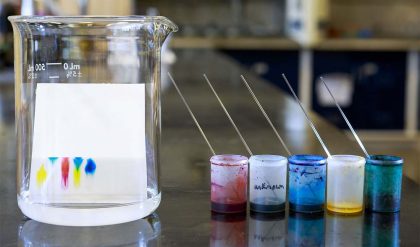The data plotted in Fig. 3.7 were obtained by the fractionation of a polydisperse polymer. Prior to the introduction of GPC, polydisperse polymers were fractionated by the addition

of a nonsolvent to a polymer solution, by cooling a solution of polymer, solvent evaporation, zone melting, extraction, diffusion, or centrifugation. The molecular weight of the fractions may be determined by any of the classic techniques previously mentioned and discussed subsequently in this chapter. The least sophisticated but most convenient technique is fractional precipitation, which is dependent on the slight change in the solubility parameter with molecular weight. Thus, when a small amount of miscible nonsolvent is added to a polymer solution at a constant temperature, the product with the highest molecular weight precipitates. This procedure may be repeated after the precipitate is removed.
These fractions may also be redissolved and again fractionally precipitated. For example, isopropyl alcohol or methanol may be added dropwise to a solution of polystyrene in benzene until the solution becomes turbid. It is preferable to heat this solution and allow it to cool before removing the first and subsequent fractions. Extraction of a polymer in a Soxhlet-type apparatus in which fractions are removed at specific time intervals may also be used as a fractionation procedure.


Comments are closed.